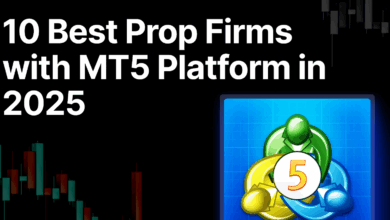Opportunities in Tokenized Traditional Finance: Revolutionizing the Crypto Industry
Introduction
For over a decade, the cryptocurrency market has been synonymous with innovation and dynamic disruption. From its beginnings as a decentralized monetary alternative to fiat currencies, the blockchain space has evolved rapidly, introducing new sectors such as DeFi, NFTs, and decentralized governance. However, under the surface of media headlines and speculative trading is an immensely impactful trend — the tokenization of traditional financial (TradFi) assets. This trend marks a new era for finance: the shift from paper-based, centralized ownership to programmable, digital tokens that represent real-world assets (RWAs).
Tokenization is no longer a concept reserved for think tanks or fintech conferences. It’s increasingly being explored, and in some cases implemented, by major financial institutions worldwide. From blue-chip investment firms to central banks, the architecture of TradFi is beginning to integrate blockchain-based tokenization protocols, creating unprecedented investment opportunities. Tokenizing traditional assets such as real estate, stocks, bonds, and cash equivalents could usher in a shift involving trillions of dollars in globally held assets, enabling them to move seamlessly on-chain.
For savvy contrarian investors, this is more than a technological evolution — it’s an economic inflection point. The convergence of blockchain and traditional finance offers early entrants a chance to participate in a transformative, undervalued cycle of growth that many market participants have yet to recognize or capitalize on.
What is Tokenization?
At its core, tokenization refers to the process of converting ownership of real-world assets into digital tokens using blockchain technology. These digital representations are securely stored, verifiable, and can be traded with the same ease as native cryptocurrencies — anytime, anywhere, across global markets. Tokenized assets may represent everything from commercial real estate and government bonds to commodities, invoices, and even art.
Tokenized RWAs offer several compelling advantages over traditional systems. First, they enable fractional ownership, allowing users to buy, sell, or hold smaller portions of high-value assets with minimal barriers to entry. This democratizes investment access, inviting a broader pool of global investors. Second, tokenization enhances liquidity for assets traditionally considered illiquid. For example, real estate—an asset that often requires long holding periods and substantial capital—can be made liquid and accessible via tradable tokens.
Operational efficiencies are also critical. Utilizing smart contracts, transactions related to tokenized assets can be automated, reducing reliance on intermediaries such as brokers, clearinghouses, or settlement agents. This reduces cost, minimizes the risk of human error, and enhances transparency through immutable on-chain records.
Sergey Nazarov’s Take on Tokenized TradFi
Among the thought leaders spearheading the conversation around real-world asset tokenization is Sergey Nazarov, co-founder of Chainlink, a decentralized oracle network crucial to bridging real-world data with blockchain ecosystems. Nazarov has repeatedly emphasized that the “endgame” for blockchain adoption isn’t speculative trading or viral meme coins — it’s the digitization of traditional financial instruments through secure, verifiable token standards.
“Every major bank, asset manager, and custodian is now exploring how to bring real-world assets onto the blockchain,” Nazarov said in a recent keynote. He believes TradFi participants are finally recognizing blockchain’s potential to improve settlement efficiency, reduce reconciliation complexities, and modernize financial markets with smart contract technologies.
According to Nazarov, tokenized government securities, real estate holdings, and private equity funds could all eventually exist on blockchain infrastructure, interfacing with legacy financial systems through interoperability protocols and oracle solutions. This development wouldn’t just revolutionize capital markets—it would legitimize crypto assets in the eyes of global regulators and mainstream institutions.
Real-World Examples in Tokenization
The migration from theory to practice is well underway, with several high-profile cases already demonstrating the viability of tokenized finance at scale. Hamilton Lane, a major player in private markets asset management, partnered with blockchain platform Securitize to tokenize a portion of one of its flagship private equity funds. This provides retail investors access to assets that were traditionally gated behind massive capital requirements and regulatory walls.
In another milestone, the Monetary Authority of Singapore (MAS), in collaboration with JPMorgan, DB Bank, and other institutions, launched Project Guardian — a pilot that successfully executed transactions involving tokenized government bonds and foreign exchange. These institutional pilots are not merely one-off experiments; they signal a long-term commitment to building scalable digital asset infrastructures.
Furthermore, Franklin Templeton introduced its OnChain U.S. Government Money Fund (FOBXX), enabling digital share transactions through blockchain while maintaining compliance with SEC regulations. Their move demonstrates how tokenization can coexist within modern compliance frameworks, blending innovation with regulatory assurance. Even asset management giant BlackRock has publicly announced exploration into tokenized fund structures, viewing blockchain as the natural progression of financial technology innovation rather than a threat to traditional incumbents.
These live implementations suggest a future where investors can engage with tokenized assets such as yield-bearing Treasuries, dividend-paying equities, commodity vault tokens, and even cash-equivalent money market funds. These tokens may be stored in crypto wallets and transferred peer-to-peer, all while complying with jurisdiction-specific financial laws.
Key Investment Insights
As tokenized finance evolves, discerning investors will need to focus on several critical factors to capitalize on this trend. Below are some key areas to monitor:
- Infrastructure Scale: Essential platforms like Chainlink and other decentralized oracles serve as the backbone of tokenized ecosystems by ensuring off-chain data (e.g., interest rates, asset prices) is accurately reflected on-chain. Investing in these foundational layers may offer asymmetric risk-reward profiles.
- Regulatory Dynamics: Jurisdictions like Singapore, the UAE, and Switzerland are leading the way with proactive regulatory sandboxes and clear digital asset policies. Investors with exposure to tokenized assets in compliant regions may benefit from friendlier legal environments and earlier adoption curves.
- Custodianship and Legal Certainty: While blockchain ensures transparent ownership, legal recourse, and secure custody remain important. Investors should assess how tokenized assets are managed off-chain, whether through regulated custodians or legally binding smart contracts ensuring investor rights.
- Liquidity Versus Yield: Tokenized instruments can offer attractive yields — especially with on-chain versions of high-interest TradFi securities like Treasury bills. Yet low trading volumes, market fragmentation, or protocol immaturity may reduce liquidity. Forward-looking investors should account for this risk when building diversified portfolios.
- Standards and Interoperability: ERC-1400, ERC-3643, and other evolving standards aim to make tokenized securities compatible across platforms. Monitoring adoption of these standards may help investors identify scalable, liquid opportunities with built-in compliance layers.
The Institutional Opportunity Ahead
Tokenization of RWAs is no longer a fringe concept — it’s fast becoming an institutional imperative. According to reports from Boston Consulting Group (BCG) and global fintech firms, the tokenized asset market could surmount over $16 trillion by 2030, touching nearly every corner of the global financial landscape. This will include tokenized real estate, equities, carbon credits, commodities, and structured investment products. It’s a tectonic shift toward open-eyed digitization of tangible value.
What’s more exciting is the accessibility. Individual investors may eventually invest in a Manhattan commercial building for a few hundred dollars, participate in global bond markets using crypto wallets, or hold fractionalized art as on-chain collateral. Tokenization doesn’t just modernize financial structures — it unlocks new business models, new governance structures, and new liquidity strategies.
DeFi protocols could interface with tokenized Treasuries, enabling yield farming with real-world backing. Central banks might use tokenized reserves for cross-border settlements. Non-custodial digital identities could manage KYC/AML verification, supplanting clunky TradFi user onboarding processes. Each use case hints at an impending paradigm shift that extends well beyond volatile token trades.
Conclusion
While many investors continue chasing hype cycles involving meme coins, NFTs, and Layer 2 airdrops, the most transformative developments are emerging quietly — at the intersection of blockchain and traditional finance. Tokenization of RWAs offers an actionable, scalable route for both institutional and retail investors to gain exposure to productive, yield-bearing, and traditionally secure financial instruments — all updated for the Web3 era.
Platforms and protocols that enable tokenization, provide decentralized data feeds, or support cross-chain interoperability are positioned to benefit the most from this long-term structural transformation. For investors bold enough to navigate initial volatility, regulatory complexity, and infrastructure fragmentation, the returns could echo — or even exceed — those seen in previous bull markets.
We are witnessing the reinvention of finance from the ground up. This isn’t speculation — it’s evolution. The only question left is whether you’ll watch it from the sidelines, or actively participate in shaping the future of tokenized
Source link



